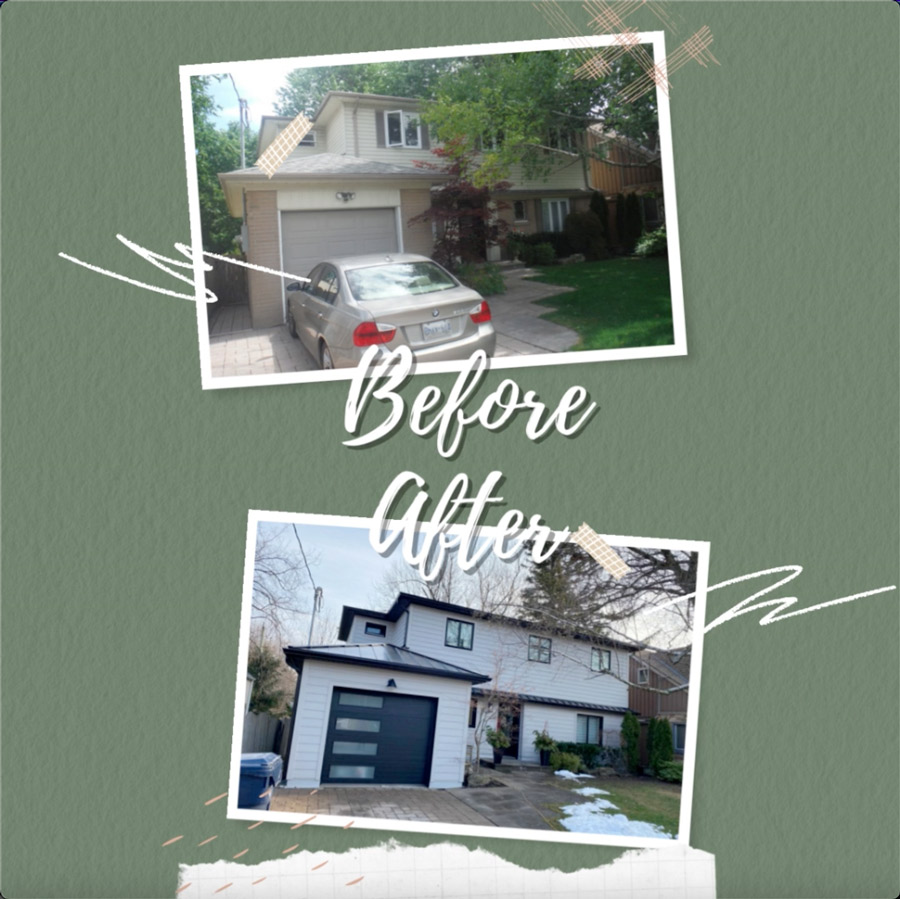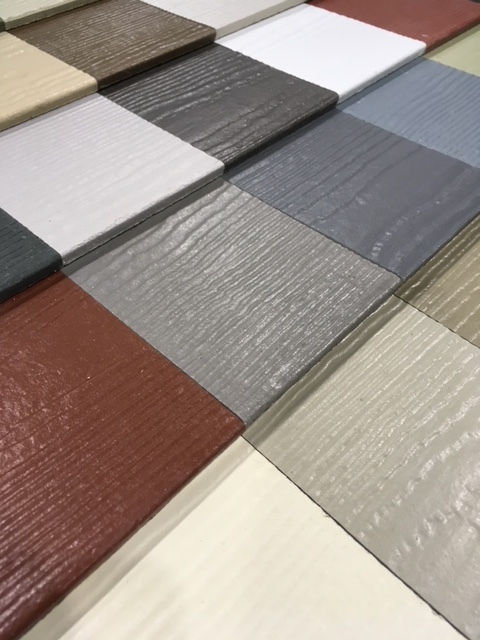Choosing the Perfect Siding Colors: Transform Your Home’s Curb Appeal Today!
Have you ever driven through your neighborhood and admired a home that just stands out? The secret often lies in one simple yet powerful element: siding colour. Choosing the perfect siding colours can dramatically transform your home’s curb appeal, turning your house into the neighborhood showstopper. With countless shades and tones available, the decision can feel overwhelming. Should you opt for classic neutrals, chic modern hues, or perhaps a bold statement colour? The right choice not only enhances your home’s beauty but also reflects your unique personality and style. In this article, we’ll guide you through selecting the ideal siding colours that will elevate your home’s exterior, ensuring it not only captures attention but also feels like an inviting retreat for you and your loved ones. Get ready to unleash your creativity and learn how the power of colour can breathe new life into your home!
The Importance of Siding Colour in Home Design
Siding colour is more than just a cosmetic choice; it’s a key element that defines the overall aesthetic and character of your home. The right siding colour can enhance architectural details, create visual interest, and even influence the perception of the home’s size and shape. When chosen thoughtfully, siding colours can harmonize with the surrounding environment, complementing nature and neighboring structures while making your home stand out in the best possible way. Moreover, the perfect siding colour can significantly boost your home’s curb appeal, which is crucial not only for personal pride but also for increasing property value.
The psychological impact of colour is another critical factor to consider. Different colours evoke different emotions and associations. For example, warm colours such as reds and yellows can make a home feel welcoming and cozy, while cool colours like blues and greens can create a sense of calm and tranquility. Neutral colours, such as whites, grays, and beiges, often convey elegance and timelessness. Understanding the emotional response elicited by various colours can help you choose a siding colour that creates the desired atmosphere for your home.
Additionally, siding colour plays a role in the overall energy efficiency of your home. Light-coloured siding can reflect more sunlight, helping to keep your home cooler in the summer and reducing air conditioning costs. Conversely, darker siding can absorb heat, which may be beneficial in colder climates. By considering these practical aspects alongside aesthetic preferences, you can make a well-rounded decision that enhances both the beauty and functionality of your home.
Factors to Consider When Choosing Siding Colours
When selecting the perfect siding colour for your home, several factors must be considered to ensure a harmonious and visually appealing result. One of the foremost considerations is the style and architecture of your home. Different architectural styles often have traditional colour palettes associated with them. For instance, a Colonial-style home might look best in classic white or soft pastels, while a Craftsman-style house might shine in earthy tones like greens and browns. Understanding the architectural language of your home can guide you toward colours that enhance its design integrity.
Another essential factor is the surrounding environment. Take note of the natural landscape, the colours of neighboring homes, and any unique features like brickwork or stone accents. The goal is to choose a siding colour that complements these elements rather than clashes with them. For example, if your home is nestled among lush greenery, a green or brown siding could blend beautifully with the surroundings. If your neighborhood has a cohesive colour scheme, you might want to select a colour that fits within that palette to maintain visual harmony.
Personal preference and lifestyle should also play a significant role in your decision. Think about the colours that resonate with you personally and how they align with your lifestyle. Are you drawn to bold, vibrant colours that make a statement, or do you prefer more subdued, classic hues that exude elegance? Your home is an extension of your personality, so choosing a siding colour that you love and feel comfortable with is paramount. Additionally, consider how the colour will look throughout the year, in different lighting conditions, and how it will age over time.
🎨 Popular Siding Colour Trends for 2025
Thinking of updating your home’s exterior? Here’s what’s trending in siding colours for 2025 — stylish, natural, and full of curb appeal.
🌿 Earthy Greens & Sage
Soft green tones like sage are making a big impression this year. Natural, calming, and perfect with white trim or wood accents, they give homes a grounded and elegant feel.
🍂 Warm Browns & Rich Neutrals
Rich, earthy browns and taupe shades bring warmth and depth to exteriors. These timeless tones work beautifully with stone, brick, or wood elements.
🧡 Soft Oranges & Terracotta
Desert-inspired colours like soft orange and terracotta are bold without being too loud. They give off a cozy, rustic vibe and work well on modern and Mediterranean-style homes.
🔷 Coastal Blues to Deep Navy
Blue siding continues to trend in 2025 — from soft sky blues to bold navy. These shades offer a serene, classic look, especially when paired with white trim or warm wood details.
🤍 Warm Whites & Greige
Greige (a blend of gray and beige) and creamy off-whites are versatile and soft, adding warmth without going too stark. They’re especially great for clean, modern designs.
❄️ Arctic White
Crisp, clean, and timeless — Arctic White is a standout in 2025. It works beautifully on traditional, farmhouse, and coastal-style homes, and pairs effortlessly with black, navy, or wood accents for strong contrast and sophistication.
🌈 Bold Accents & Vibrant Touches
Want to add personality? Bold colours like deep red, charcoal, and forest green are popular for accent areas like doors, shutters, or upper-level siding. Just the right touch of drama.

Artic White After
How to Use Colour Theory in Siding Selection
Colour theory is a valuable tool in the siding selection process, offering insights into how different colours interact and the effects they produce. Understanding the basics of colour theory can help you create a balanced and aesthetically pleasing exterior. One of the fundamental principles is the colour wheel, which shows the relationships between primary, secondary, and tertiary colours. By using the colour wheel, you can identify complementary colours (those opposite each other on the wheel), analogous colours (those next to each other), and triadic colour schemes (three colours evenly spaced around the wheel).
Complementary colour schemes are particularly effective for creating contrast and visual interest. For instance, pairing a blue siding colour with orange accents can make architectural features pop and add a dynamic element to your home’s exterior. Analogous colour schemes, on the other hand, offer a more harmonious and cohesive look. Using colours that are close to each other on the colour wheel, such as various shades of green and yellow, can create a serene and unified appearance.
Another aspect of colour theory to consider is the concept of warm and cool colours. Warm colours, such as reds, oranges, and yellows, are associated with energy and warmth, making them ideal for creating a welcoming and inviting exterior. Cool colours, like blues, greens, and purples, evoke calmness and relaxation, perfect for creating a peaceful retreat. By understanding the emotional impact of warm and cool colours, you can select a siding colour that aligns with the desired mood and atmosphere of your home.
Choosing Colours that Complement Your Home’s Architecture
Each architectural style has its own set of characteristics that can be enhanced through thoughtful colour selection. For example, a Victorian home with its intricate details and ornate trim work can be beautifully highlighted with a combination of bold and subtle colours. Shades of plum, deep green, and cream can accentuate the elaborate woodwork and add to the historical charm. On the other hand, a modern minimalist home might benefit from a monochromatic colour scheme with sleek, muted tones like charcoal gray or soft white to emphasize clean lines and simplicity.
For traditional homes, such as Colonial or Cape Cod styles, classic colours like white, beige, and navy blue are timeless choices that never go out of style. These colours can highlight the symmetrical design and provide a polished, elegant look. If you have a Craftsman-style home, earthy tones like olive green, rust, and brown can complement the natural materials and handcrafted details, creating a warm and inviting exterior.
Contemporary homes, with their bold shapes and innovative designs, offer more flexibility in colour choices. Neutral colours like black, gray, and white are popular for creating a sleek, modern aesthetic. However, incorporating a pop of colour, such as a bright red door or vivid blue accent wall, can add personality and visual interest. Understanding your home’s architectural style and selecting colours that enhance its unique features can result in a cohesive and visually appealing exterior.

The Role of Neighborhood Aesthetics in Colour Choice
When selecting siding colours, it’s essential to consider the broader context of your neighborhood. Your home’s exterior should not only reflect your personal style but also contribute to the overall harmony and cohesiveness of the community. Take a walk around your neighborhood and observe the colour schemes of nearby homes. Are there predominant colours or styles that create a unified look? While it’s important to choose a colour that you love, it’s equally crucial to ensure that your home fits well within the neighborhood’s aesthetic.
If you live in a historic district or a community with specific guidelines, there may be restrictions on the colours you can use. These guidelines are often in place to preserve the character and integrity of the neighborhood. In such cases, it’s best to choose colours that adhere to these regulations while still allowing for personal expression. For example, if the neighborhood favors neutral tones, you might opt for a unique shade of beige or gray that stands out subtly without clashing with the surrounding homes.
Conversely, if your neighborhood is more eclectic and diverse in its colour palette, you have more freedom to experiment with bolder hues. However, it’s still important to consider how your chosen colour will interact with neighboring homes. A bright, vibrant colour might look fantastic on its own but could be jarring if it clashes with the subdued tones of adjacent houses. Striking a balance between personal preference and neighborhood cohesiveness can enhance the overall appeal of your home and contribute positively to the community’s visual landscape.
Testing Siding Colours with Samples and Visualization Tools
Before committing to a siding colour, it’s crucial to test your options thoroughly to ensure you’re making the right choice. One effective way to do this is by obtaining physical samples of the colours you’re considering. Many siding manufacturers and retailers offer sample swatches that you can place on different areas of your home’s exterior. Observe these samples at various times of the day and under different lighting conditions, as natural light can significantly affect how a colour appears. This hands-on approach allows you to see how the colours interact with your home’s architecture and surroundings.
In addition to physical samples, digital visualization tools can be incredibly helpful in the decision-making process. Many home improvement websites and apps offer virtual design tools that allow you to upload a photo of your home and experiment with different siding colours. These tools provide a realistic preview of how your home will look with various colour options, making it easier to visualize the final result. Some advanced tools even offer 3D modeling, giving you a comprehensive view of how the colours will appear from different angles.
Another valuable resource is consulting with a professional colour specialist or designer. These experts can provide insights based on their experience and knowledge of colour theory, architectural styles, and current trends. They can help you narrow down your options, suggest complementary accent colours, and ensure that your final choice enhances your home’s curb appeal. By combining physical samples, digital tools, and professional advice, you can make a well-informed decision that you’ll be happy with for years to come.
Maintenance Considerations for Different Siding Colours
When choosing a siding colour, it’s important to consider the maintenance requirements associated with different hues. Some colours may show dirt, grime, and wear more readily than others, impacting the long-term appearance of your home. Light-coloured siding, such as white or beige, tends to show dirt and stains more easily, requiring more frequent cleaning to maintain its pristine appearance. However, these colours can also make small imperfections less noticeable, which can be an advantage in the long run.
Darker colours, such as deep blues, greens, and browns, can create a striking and elegant look, but they may also show fading and chalking more prominently over time. This is especially true in areas with intense sunlight or harsh weather conditions. Regular maintenance, including periodic cleaning and touch-ups, can help preserve the rich colour and prevent premature fading. Additionally, selecting high-quality, UV-resistant paint or siding materials can extend the longevity of darker colours.
Another consideration is the type of siding material you choose, as different materials have varying maintenance needs. Vinyl siding, for example, is relatively low-maintenance and comes in a wide range of colours. However, it can fade over time, especially in darker shades. Fiber cement siding is known for its durability and colour retention but may require periodic painting to keep it looking fresh. Wood siding offers a classic and natural appearance but demands regular upkeep, including staining or painting, to protect against weathering and pests. By understanding the maintenance implications of different siding colours and materials, you can make a choice that aligns with your lifestyle and long-term plans for your home.
Professional Advice: When to Consult a Colour Specialist
While many homeowners feel confident in choosing siding colours on their own, there are times when consulting a professional colour specialist can be incredibly beneficial. If you find yourself overwhelmed by the sheer number of options or unsure about how to create a cohesive colour scheme, a colour specialist can provide valuable guidance. These professionals have a deep understanding of colour theory, architectural styles, and current design trends, allowing them to offer expert recommendations tailored to your specific needs and preferences.
A colour specialist can also help you navigate the complexities of coordinating siding colours with other exterior elements, such as roofing, trim, and landscaping. They can suggest complementary or contrasting colours that enhance the overall aesthetic of your home, ensuring that every element works together harmoniously. Additionally, a colour specialist can provide insights into how different colours will look under various lighting conditions and how they will age over time, helping you make a well-informed decision.
Another advantage of consulting a colour specialist is their access to advanced visualization tools and resources. They can create detailed colour renderings and mock-ups of your home, allowing you to see how different colour combinations will look before making a final decision. This personalized approach can save you time, money, and frustration by preventing costly mistakes and ensuring that you achieve the desired result. Whether you’re planning a complete exterior makeover or a subtle refresh, enlisting the help of a professional colour specialist can provide peace of mind and help you achieve the perfect look for your home.
Conclusion: Making Your Final Colour Decision
Choosing the perfect siding colour for your home is a significant decision that requires careful consideration of various factors. From understanding the importance of siding colour in home design to exploring popular colour trends and using colour theory, every step plays a crucial role in achieving a harmonious and visually appealing exterior. By considering your home’s architecture, the aesthetics of your neighborhood, and the practical aspects of maintenance, you can make a well-rounded decision that enhances both the beauty and functionality of your home.
Testing siding colours with samples and visualization tools allows you to see how different options will look in real life, providing valuable insights and helping you avoid costly mistakes. Additionally, consulting with a professional colour specialist can offer expert guidance and personalized recommendations, ensuring that your final choice aligns with your vision and preferences.
Ultimately, the perfect siding colour is one that reflects your unique personality and style while complementing your home’s architectural features and surrounding environment. By taking the time to explore your options and make an informed decision, you can transform your home’s curb appeal and create a welcoming and inviting retreat for you and your loved ones. Embrace the power of colour and let it breathe new life into your home, turning it into the neighborhood showstopper you’ve always dreamed







